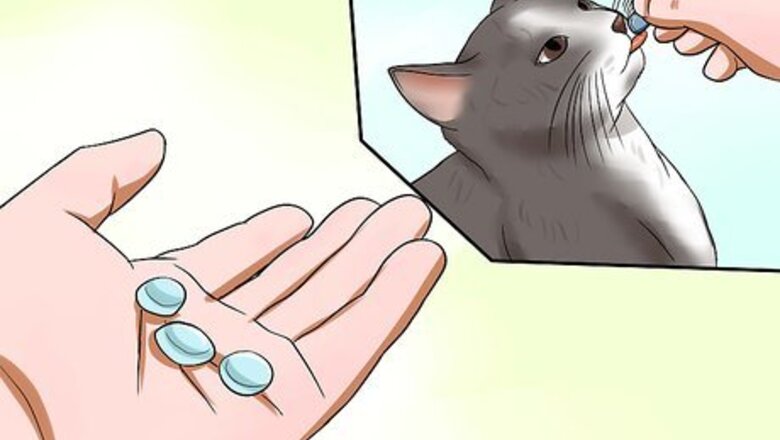
views
Prepping for Training
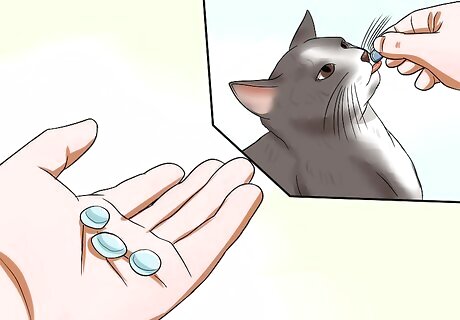
Find a reward. If you want your cat to come when called, you have to offer a reward of some kind. Unlike dogs, cats do not always work to please their owners alone. If your cat does not feel she will be rewarded for behaving, she may not engage in an activity. Food is highly recommended as a reward. The vast majority of cats will work for a treat or food type they love. Choose something other than their everyday food. Get a special treat from the store or offer a small bit of deli meat or tuna. You may have to do some trial and error to find a food type your cat likes. Though most cats’ primary pleasure is food, there are some cats that just aren’t as interested. If your cat is generally disinterested in food, substitute the food treat with a special toy, favorite brush, or even a certain petting your cat enjoys.

Decide on a call. Make up a unique call to signal to your cat she needs to come. You should choose something that's not an every day phrase. Your cat's name, for example, is a bad option for a call as you likely say it in situations where you don't need your cat to come. This can be confusing. Think of a unique phrase or sound you can use to get your cat to come. Noises can work well. You can say can say something like, "Ki-ki-ki!" in a high-pitched voice. You can make a clicking or squeaking noise. A whistle may also work. You can also choose a phrase you don't say often. You can try something like, "Come here!" or "Treats!" or "Tuna!"

Establish a positive connection between the sound and the reward. Once you've chosen your noise and reward, start establishing a positive connection. If you want your cat to come in response to a particular sound, you need to make sure she associates that sound with positive things. Make your call and then offer your cat food, treats, toys, or petting as a reward. If you're using food as a reward, you may want to make your call just before dinnertime. Positive reinforcement is the key to successfully training your cat to do things.
Establishing the Habit
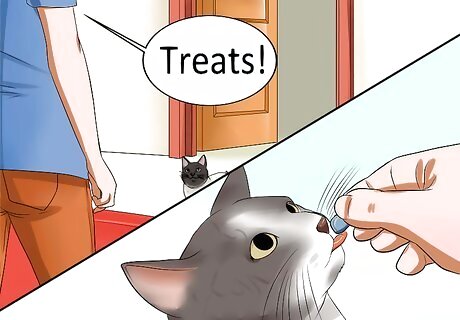
Call your cat and then offer a reward. Once the reward and reinforcement is established, you can begin training time. To start, begin calling your cat. Offer her the reward as soon as she responds. Stand a couple feet away from your cat. Do your call. It may also be helpful to show your cat the reward as you call her. For example, you can crinkle a bag of treats or dangle her toy in front of you. As soon as your cat comes to you, reward her. Give her a treat or toy, pet her, brush her, or engage in any reward you've established. Do not be surprised if your cat takes awhile to come at first. It may take awhile for your cat to learn she should approach you when she hears your call. Be patient. Keep doing your call until your cat figures out she needs to come.
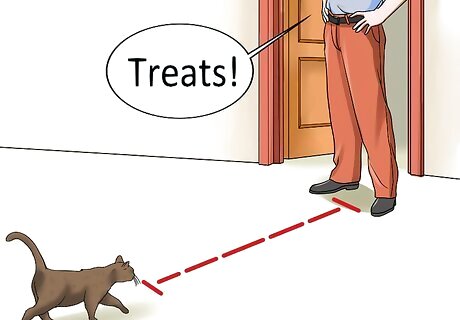
Increase the distance. Once your cat comes to you from a small distance, start increasing the distance. Step back a few more feet when you call your cat. Try calling her from other rooms. You can also try calling her during times she's distracted. Remember, you want your cat to come when called in a variety of situations. Varying the distance and situation can help establish the behavior.
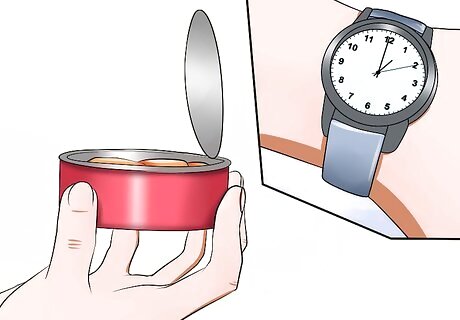
Try to train before mealtimes. Once your cat is beginning to understand the command, you can start training her. If you're using food as a reward, your cat may be more motivated by food if she's hungry. Try scheduling training sessions about 15 minutes before mealtimes.
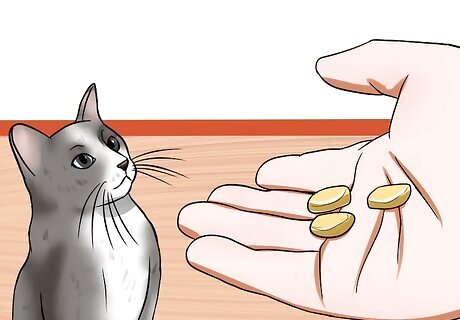
Reward your cat immediately. Don’t wait too long to reward your cat. Otherwise, your cat may not make the connection between the treat and the act of coming towards you. As soon as your cat comes to you, offer the reward. Animals live in the immediate. If you want your cat to understand what the command means, she needs to be rewarded right away.

Practice in short sessions. Try to get in the habit of training your cat once a day. Cats tend to be more independent and have limited attention spans, so train in short sessions. Try brief 5 minute training sessions once or twice a day.
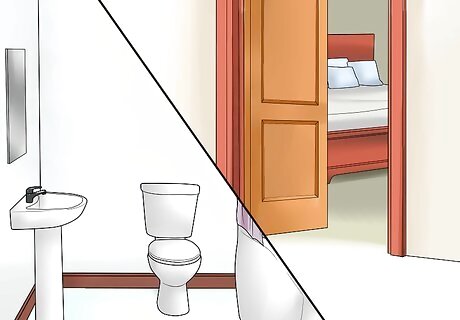
Train your cat in many different parts of the house. Once your cat begins to reliably come to you in the kitchen or wherever you first began training, move to other parts of the house while calling to them. Eventually your cat will know to just follow the sound of your voice.
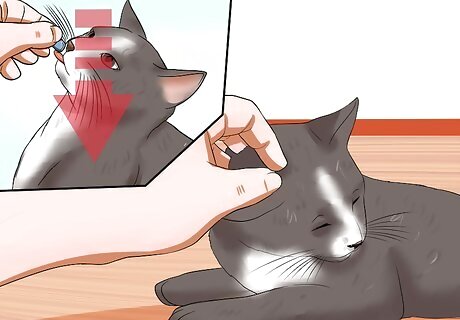
Slowly wean your cat off the treat. As your cat begins to come consistently when called, alternate the treats with petting, a scratch behind the ears, or any other kind of positive attention. Too many treats or food as reward can cause weight problems in your cat. You also want your cat to come when called in any situation, and you may not always have a treat on hand. Once your cat reliably responds to your call, give it the same treat three out of every four times, then reduce it to half the time, then a third, and so on until you are only occasionally give it the treat you once trained it with. Continue using non-food rewards. Eventually, your cat will understand she needs to come when called even if treats are not present.
Avoiding Pitfalls

Start young, if possible. Cats tend to learn quicker when they're young. Therefore, the best time to begin training your cat is when she's a kitten. However, many people adopt cats when they're older. An older can learn as well. It just may take more time.
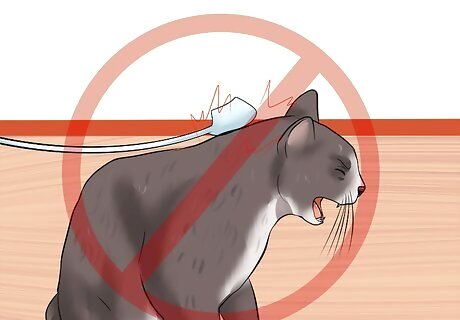
Do not punish your cat. Don’t punish your cat for not following along with your training, even if your cat only comes some of the time or doesn’t come at all. Cats do not respond well to punishment. They do not connect punishment with bad behavior, and simply think they're getting mistreated needlessly. If you punish your cat, she may become stressed or unhappy at home. This can result in her being even less likely to come when called.
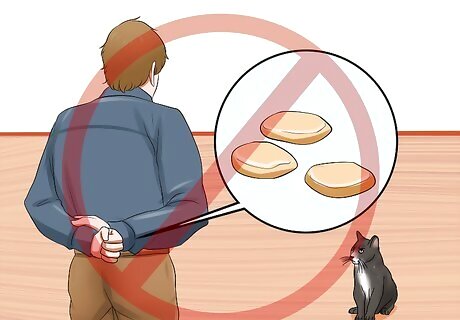
Do not withhold rewards if your cat responds slowly. At first, it may take your cat awhile to come when she's called. You should not withhold rewards if your cat does not follow the command immediately. Your cat may simply be confused and be taking awhile to make the connection. You want to make sure to reward your cat consistently, solidifying the positive association with your call. Reward your cat even if she's taking awhile.
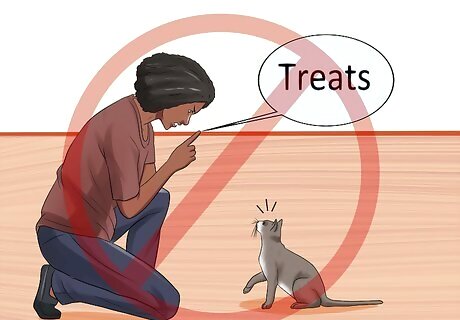
Avoid using your command in negative situations. You want to avoid using the come command for anything that may create a negative situation. Bad associations may make your cat hesitant to come when called. If you need to take your cat to the vet or give them an unpleasant medicine, approach your cat instead of having her come to you.
















Comments
0 comment